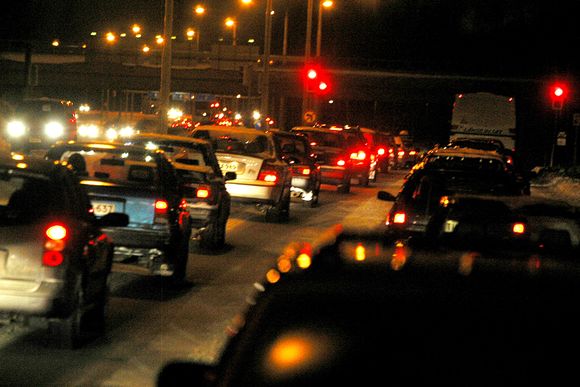Finland: Drivers will no longer rule the road in cities of the future

What will the cities of the future look like? Kuopio city planner Leo Kosonen and his Australian colleague Peter Newman are currently developing a new theory for urban planning, by which the autocracy of the automobile will give way to a world where pedestrian and public transportation has equal importance.
Finnish city planning is making a clear break from its obsession with motorized vehicles. According to Leo Kosonen, who has studied urban systems for dozens of years, a new way of thinking is arising in which downtown walkways and public transport regain their ground as the heart of the city.
“The old paradigm resolved problems on the premise that everyone owned a car. Today the focus is on the development of pedestrian and public transport, even if they aren’t referred to by name,” says Kosonen. The characteristics of a city where cars dominate are large-scale investments, like expansive parking areas and major motorways that cut right through the centre of the city. The sprawling urban structure with its large suburbs is also a result of this car-centric kind of thinking.
Kosonen feels there is still a major segment of the city population that may not wish to rely on cars or hope to stifle the spread of traffic. This part of the population must also be offered alternatives.
“Experience also shows that those cities that can manage without so many cars show great advances in culture, art and social order,” Kosonen says, referencing his Australian colleague Peter Newman’s work in Australia, Canada, the USA, Asia and Europe.
Kuopio as a model city
One example city is Kuopio, a city of just over 100,000 inhabitants in central Finland where Kosonen has worked for over 40 years as a city planner. He describes Kuopio as “Finland’s smallest public transport city” because the city’s is fenced in by waterways and the surrounding terrain, meaning all of its urban development is limited to an eight-kilometre strip.
Due in part to this geographic reality, the city has had to be built up efficiently, as clusters of suburbs connected by public transport. Dense cities are always more efficient than sprawling areas, says Kosonen. Another good example is Barcelona, Spain, located as it is between the sea and the mountains.
“Back in the 1980s and 1990s, the situation was the same [in Kuopio] as anywhere else. The city centre was full of cars and it was a right nasty place,” says Kosonen.
From 1975 to 1990, 7,000 new residents moved to Kuopio with 13,000 new cars. The city was developed with cars in mind: hypermarkets sprang up and zoning was prepared for new housing areas featuring single-family homes. The trend only ended in the early 90s, when Finland’s recession cooled consumption.
“After that, the city started to sell apartments in the centre, even ones without a parking place, mind you, and they went like hot cakes.”
Now it is 2014, and Kuopio’s new residential areas reflect Kosonen’s philosophy. The new Saaristo district is composed of finger-like groups of homes along a common public transport route. Significant fill-in construction has also taken place in many inner-city areas.
Smaller towns have no real alternative
Kosonen reminds us that for thousands of years, cities were founded in the premise that all of the vital locations must be within easy reach on foot. The massive motorisation of the 20th century shaped our idea of a modern city, where housing and shopping opportunities are located far away from the city centre.
“This development trend is now over, at least everywhere else but the old socialist and developing countries,” says Kosonen. He believes that Finland’s cities, Helsinki in particular, are clearly taking steps to remove the excess cars that are choking their downtown areas.
“Tampere and Turku have only starting discussions to return their tram networks, but Jyväskylä, Lahti and Kuopio are strengthening their bus service considerably. Cities smaller than Kuopio don’t really have a reasonable alternative to cars, although some small signs of change are on the horizon in many of these smaller areas, too.”
RelatedLinks:
Finland: Radical road tax changes proposed, Yle News
Sweden: Weak sales of electric cars and hybrids in Sweden, Radio Sweden



